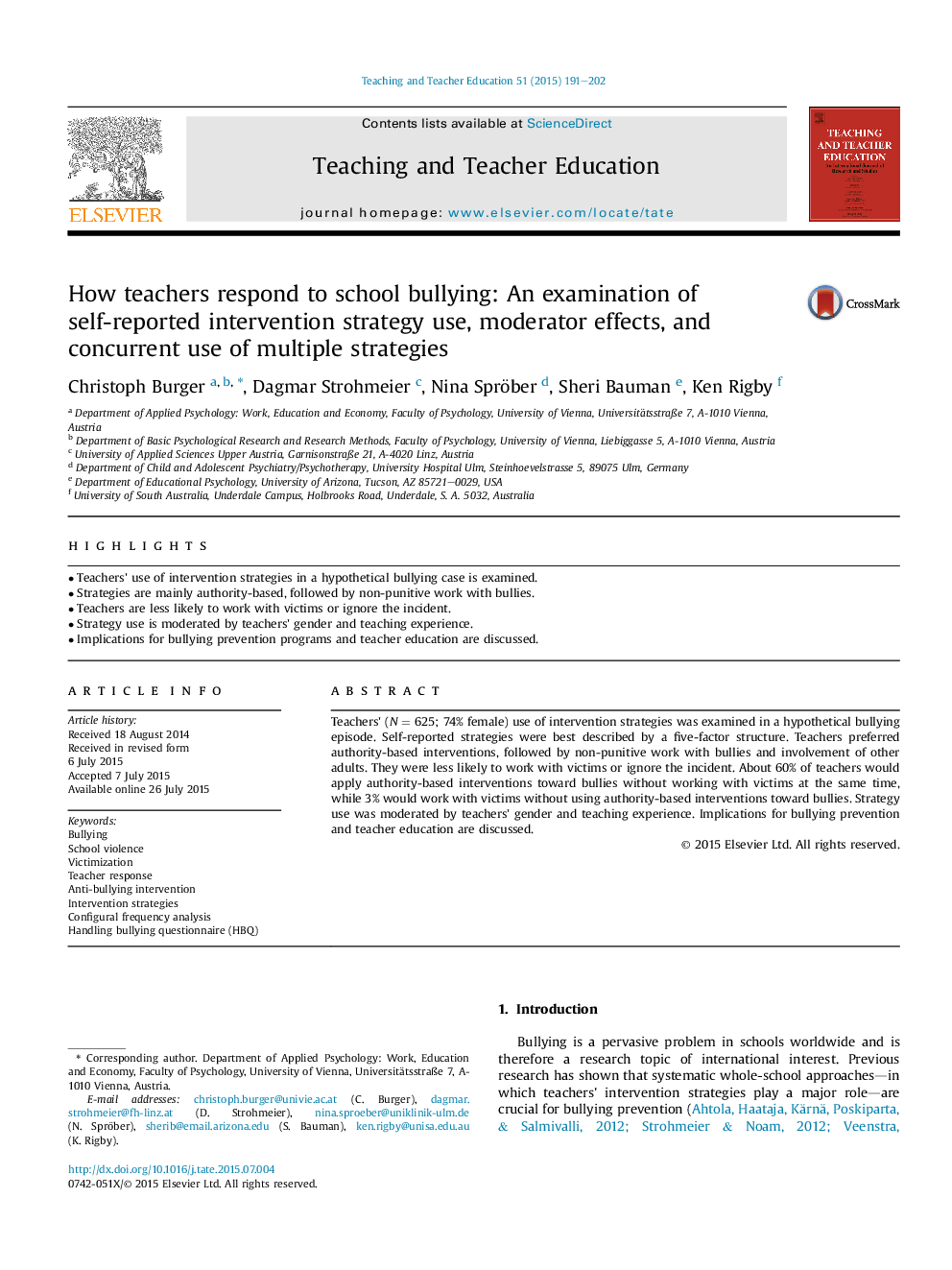| Article ID | Journal | Published Year | Pages | File Type |
|---|---|---|---|---|
| 373936 | Teaching and Teacher Education | 2015 | 12 Pages |
•Teachers' use of intervention strategies in a hypothetical bullying case is examined.•Strategies are mainly authority-based, followed by non-punitive work with bullies.•Teachers are less likely to work with victims or ignore the incident.•Strategy use is moderated by teachers' gender and teaching experience.•Implications for bullying prevention programs and teacher education are discussed.
Teachers' (N = 625; 74% female) use of intervention strategies was examined in a hypothetical bullying episode. Self-reported strategies were best described by a five-factor structure. Teachers preferred authority-based interventions, followed by non-punitive work with bullies and involvement of other adults. They were less likely to work with victims or ignore the incident. About 60% of teachers would apply authority-based interventions toward bullies without working with victims at the same time, while 3% would work with victims without using authority-based interventions toward bullies. Strategy use was moderated by teachers' gender and teaching experience. Implications for bullying prevention and teacher education are discussed.
